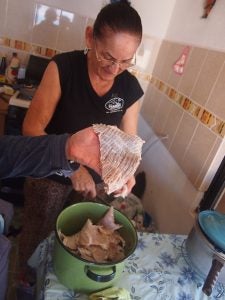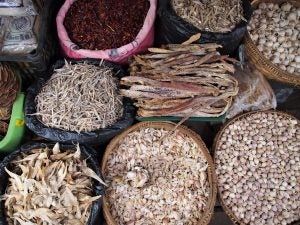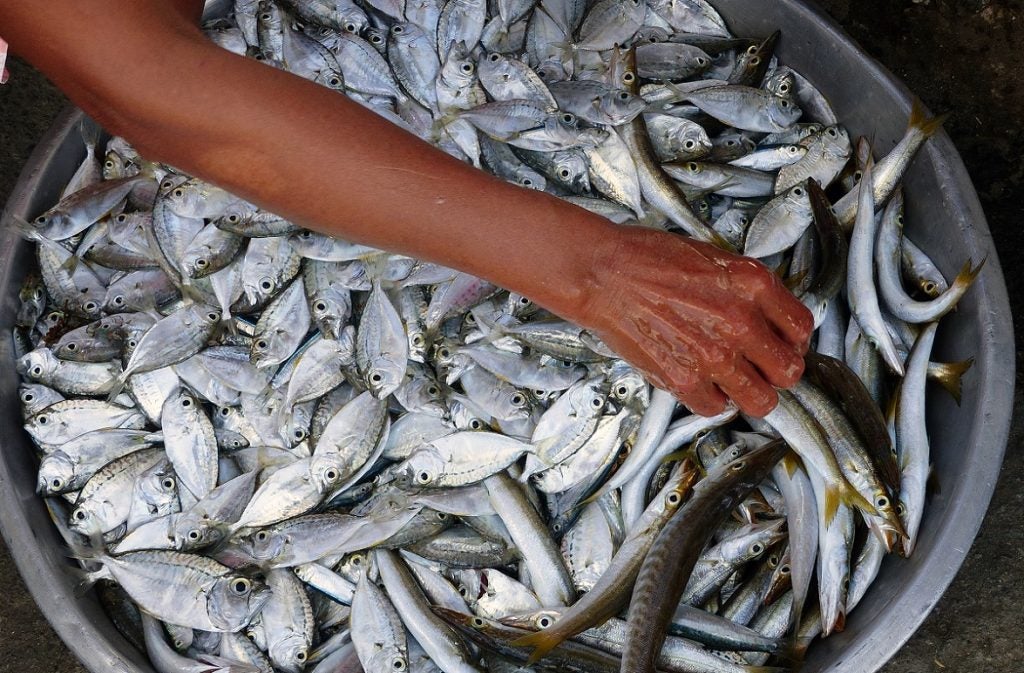For nearly a decade, I’ve worked on sustainable fisheries management, traveling to small-scale fishing communities around the world to learn how best to build the capacity of local fishers, scientists and managers to ensure the sustainability of their fisheries. From Mexico to Myanmar, I’ve worked with communities to help them reach their goals so they are not catching too many fish and helping them select gears and fishing areas to ensure their fisheries aren’t damaging key habitats. And in each place, I’ve had the privilege to share meals with the fishers and community members with whom I am working; we’ve eaten the very fish that we are working to manage.
That’s why it was so alarming when I read a series of reports and studies all pointing to the same conclusion: that the global community of NGOs, civil society organizations, development agencies and policy decision-makers have been failing to treat fish as food. And that this failure has resulted in the channeling of millions of tons of micronutrient-rich aquatic foods away from the people and groups who need them most.
 Fish, shellfish, seaweed and other aquatic species are critical sources of food and nutrition for billions of people around the world. They are especially important for coastal and rural communities throughout the Global South and the developing tropics, where vulnerability to malnutrition and food insecurity are especially high. Aquatic foods provide a valuable source of protein, and are often more affordable than other animal protein sources. In addition, and often more importantly, aquatic foods are high in vital micronutrients like zinc, iron, A and B vitamins, and these are generally more easily accessed by our bodies (bioavailable) than in plant-based foods. On top of all this, aquatic foods are more sustainable when compared to a wide-variety of land-based foods. In other words, aquatic foods are one of the best and most important resources available to support a transition to sustainable, equitable and climate-resilient food systems the world over.
Fish, shellfish, seaweed and other aquatic species are critical sources of food and nutrition for billions of people around the world. They are especially important for coastal and rural communities throughout the Global South and the developing tropics, where vulnerability to malnutrition and food insecurity are especially high. Aquatic foods provide a valuable source of protein, and are often more affordable than other animal protein sources. In addition, and often more importantly, aquatic foods are high in vital micronutrients like zinc, iron, A and B vitamins, and these are generally more easily accessed by our bodies (bioavailable) than in plant-based foods. On top of all this, aquatic foods are more sustainable when compared to a wide-variety of land-based foods. In other words, aquatic foods are one of the best and most important resources available to support a transition to sustainable, equitable and climate-resilient food systems the world over.
This concept of “food systems” is also relatively new to the global development community. Later this year, the United Nations will host the first ever Food Systems Summit, the goal of which is to “awaken the world to the fact that we all must work together to transform the way the world produces, consumes and thinks about food.” The Summit will crystalize this new way of thinking about food as part of a vast, interconnected system. This way of thinking is a departure from the traditional focus on individual food production sectors separately from each other, and from the larger socio-economic and governance systems which they exist within. This shift would undeniably represent an important step in the right direction: transforming our food systems would be a powerful way to make meaningful progress on all 17 of the Sustainable Development Goals.
Aquatic food systems are a cornerstone of the livelihoods, economies and cultures of many coastal, rural and riparian communities.
However, this food systems transformation will be incomplete if it does not include aquatic foods. In fact, fostering equitable, sustainable, climate-resilient aquatic food systems can directly move the needle on nine of the SDGs. Aquatic food systems are a cornerstone of the livelihoods, economies and cultures of many coastal, rural and riparian communities. Yet aquatic foods are too often left out of food system conversations. Just as those of us working on sustainable fisheries don’t always think about fish as food, so too have those working on addressing global food and nutrition insecurity failed to think about fish. For these reasons, EDF and our partners — the Beijer Institute, the Royal Swedish Academy of Sciences, EAT Forum, Friends of Ocean Action, the Stanford Center for Ocean Solutions, WorldFish and World Wildlife Fund — have been working to raise the profile of aquatic foods in the planning of the Summit and in the actions and commitments that it will generate.

One of the ways we’ve been working toward this goal is through the convening of three Summit “Dialogues.” These virtual Dialogues were envisioned by the Summit organizers as a key method to engage a wide variety of stakeholders in the planning process. As EDF and our partners consider inclusivity a priority, we decided to organize a series of Dialogues designed to engage and center the voices of small-scale fisher (and farmer!) actors. While engaging small-scale stakeholders in a virtual format is difficult, by taking a few extra steps, such as the provision of simultaneous translation services and local tech support staff, we were able to achieve a significant level of inclusivity and participation from small-scale actors. We have even heard from many of those participants that they deeply valued the opportunity to voice their concerns. Key among these concerns is that, much of the time, no one is speaking for small-scale producers in national or international policy discussions around food and nutrition. You can read more about these Dialogue discussions, and the conclusions and calls to action they produced, here, here and here.
As we look to September when the U.N. Food Systems Summit will take place, EDF and our partners are continuing to work to ensure the world’s fishers — especially small-scale and marginalized fishers and community members — will not just be represented, but will be actively and meaningfully included. As countries develop plans and commitments to foster food system transformation and achievement of the SDGs, small-scale fishers must be at the table. These are the best people to help craft solutions and pathways toward food system transformation that will work for nature and for the people who depend on it. We believe it’s high time these actors had the opportunity to speak for themselves.










